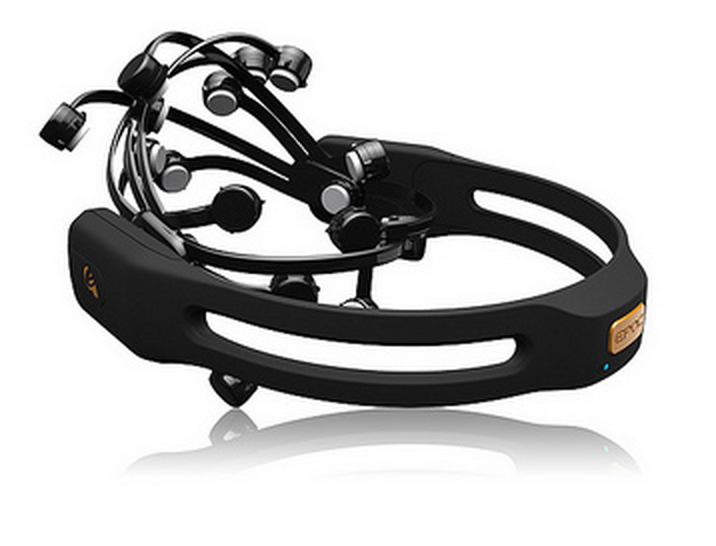Beyond the Screen:
The Future of User Interaction in a Wearable World
Erica Stanley ( @ericastanley )
Screens, Touch/ Pointer




@ericastanley
#BeyondScreens
Look Ma, No Screens





@ericastanley
#BeyondScreens
Interaction Models
@ericastanley
#BeyondScreens

Title Text

OUI Interaction Model
@ericastanley
#BeyondScreens
Title Text

OUI Interaction Model
@ericastanley
#BeyondScreens
Developing Voice Interfaces
- One of the oldest means of human interaction
- Human-computer interaction imitating very natural human-human communication
- Requires no hand movement or body effort
Benefits
@ericastanley
#BeyondScreens
Underlying Components

@ericastanley
#BeyondScreens
Underlying Components

Initiates AudioStream,
captured by device
@ericastanley
#BeyondScreens
Underlying Components

Initiates AudioStream,
captured by device
Calls on experiences shared
by device and user.
@ericastanley
#BeyondScreens
The vision for your system will determine how you put these components together.
Developing Voice Interfaces
- A set of vocabulary of commands
- focus is on recognition component
Bounded, structured experience
@ericastanley
#BeyondScreens
Developing Voice Interfaces
Bounded, structured experience
-
Benefits
-
fast, would be able to perform recognition quickly
-
limited --> less space required
-
very accurate
-
consistent
-
@ericastanley
#BeyondScreens
Developing Voice Interfaces
Bounded, structured experience
-
Disadvantages
-
system is inflexible
-
user bears responsibility for knowing commands
-
designer's job to bring commands to user's attention at appropriate time
-
@ericastanley
#BeyondScreens
Developing Voice Interfaces
Richer Dialogue
-
System takes initiative
-
Can think of these interfaces more as a human-human conversation
-
How are the user's supported in this dialogue?
-
Awareness of task, immediate context, memory of very recent behavior
-
-
Learns users preferences over time and the dialogue grows accordingly
@ericastanley
#BeyondScreens
Developing Voice Interfaces
Best Practices
-
When to use:
-
Any use case where touch interaction is not desired and user's visual focus is low
-
In-car interaction and navigation
-
Eyes and hands are occupied
-
-
Medical environments requiring sterility
-
-
Security
-
Powerful mechanism for identifying user
-
-
Shared experiences
-
@ericastanley
#BeyondScreens
Developing Voice Interfaces
Best Practices
-
When to avoid:
-
Public Places
-
Interactions where errors can have life-threatening impact
-
@ericastanley
#BeyondScreens
Title Text

OUI Interaction Model
@ericastanley
#BeyondScreens
Developing Manipulation-based
Interfaces
- Natural real-world intuitive interactions (NUI)
- 2 Main types
- Deformable
- Non-deformable
- screen based touch
- texting
- tangible handling
@ericastanley
#BeyondScreens
Developing Manipulation-based
Interfaces
- Touch Type: tip, pad, nail, knuckle
- Number of simultaneous touch points
- Motion of the touch
- Direction of motion
- Amount of pressure used
- Duration
- Distance
- Location of contact points
Touch, Non-deformable (NUI)
@ericastanley
#BeyondScreens
Developing Manipulation-based
Interfaces
- Input interactions that users perform using freehand manipulations that change the shape of a deformable object or display
- Rely on skills users already have and use in real world activities
Deformable (OUI)
@ericastanley
#BeyondScreens
@ericastanley
#BeyondScreens
Developing Manipulation-based
Interfaces
- When to Use:
- Physical form compliments/ enhances function
- Precision/ accuracy is desired
- Public places where voice or gesture tracking would be difficcult
Best Practices
@ericastanley
#BeyondScreens
@ericastanley
#BeyondScreens
Developing Manipulation-based
Interfaces
- When to Avoid:
- Hands are likely occupied
- Driving/ Cycling
- Situations requiring sterility
- Medical situations
- Serving/ Eating food
- Hands are likely occupied
Best Practices
@ericastanley
#BeyondScreens
@ericastanley
#BeyondScreens
Developing Manipulation-based
Interfaces
- In 2D spaces, ensure at least a 15mm surface radius for interactive elements and at least 5mm between
- In 3D spaces, consider visual feedback (ex. depth) for movable elements
- Consider haptic feedback when visual feedback isn't available/ desired
- Respond to every contact with immediate feedback and fluid transitions
- Enable basic, direct manipulation
- Avoid secondary controls, when possible
Best Practices
@ericastanley
#BeyondScreens
@ericastanley
#BeyondScreens
Title Text

OUI Interaction Model
@ericastanley
#BeyondScreens
Developing Gesture-based
Interfaces
- In-Air Gestures (OUI)
- Like Speech, one of the oldest forms of human-human communication
- Used to issue a command or communicate with devices
- Must design system to capture gestures
- Hand movements
- Facial Expressions
- Body Motion
- Eye Tracking
- Makes use of Computer Vision and Machine Learning
@ericastanley
#BeyondScreens
Developing Gesture-based
Interfaces
- When to Use
- Interaction with large displays
- Situations requiring sterility
- When to Avoid
- Public places
-
Interactions where errors can have life-threatening impact
@ericastanley
#BeyondScreens
Developing Gesture-based
Interfaces
- Best Practices
- Avoid time-based gestures as it delays power users
- Clearly communicate how to start and stop a gesture
- Apply the gesture principles for a learnable safe system
- identity
- negation
- inversion
- commutativity
- Handle false gestures, positive & negative
@ericastanley
#BeyondScreens
Augmented Reality/ Mixed Reality Interfaces
- Overlaying user interface to enhance the body or physical environment
- Visual Augmented Interfaces
- Projected Display in conjunction with camera display(s) of physical environment
- Makes use of Computer Vision to track gestures and targets in the user's environment
- May also enhance user's field of vision and focus
- Audio Augmented Interfaces
- Overlaying audio on top of environmental sounds
- May also enhance user's audible or vocal range
- Mixed modality (combination interfaces)
- Visual Augmented Interfaces
@ericastanley
#BeyondScreens
Interaction Patterns
@ericastanley
#BeyondScreens
Microinteractions
Contained product moments that revolve around a single use case and have one main task.

@ericastanley
#BeyondScreens
M*C Based Patterns
- MCRpd
- OUI Framework
- Model Presentation Adapter Controller Coordinator
@ericastanley
#BeyondScreens
MCRpd

@ericastanley
#BeyondScreens
OUI Framework

@ericastanley
#BeyondScreens
MPACC: Model-Presentation-Adapter-Controller-Coordinator

@ericastanley
#BeyondScreens
OUI Interaction Patterns
- Microinteractions simplify interaction with non-display devices
- M*C patterns reduce coupling between models, controllers and interfaces
- Reusability - enables development for multiple connected devices/ platform rather than a single device
- Separation of responsibility - simplifies development process
- MPACC
- Best for Connected System Architecture
-
OUI Framework (updated MCRpd)
- Best for Connected Device Architecture
Considerations
@ericastanley
#BeyondScreens
Sources
- http://airccse.org/journal/ijasuc/papers/4413ijasuc04.pdf
- http://www.oreilly.com/pub/e/3146
- http://goo.gl/7NDlBb
- http://www.oreilly.com/pub/e/3223
- http://gaia.cs.uiuc.edu/papers/ubicomp01-c.pdf
- http://goo.gl/YmIrCj
- http://praxtime.com/2014/03/31/god-particle-augmented-audio-reality-wearables/
Beyond the Screen
By Erica Stanley
Beyond the Screen
Wearables TechCon 2015
- 2,755



